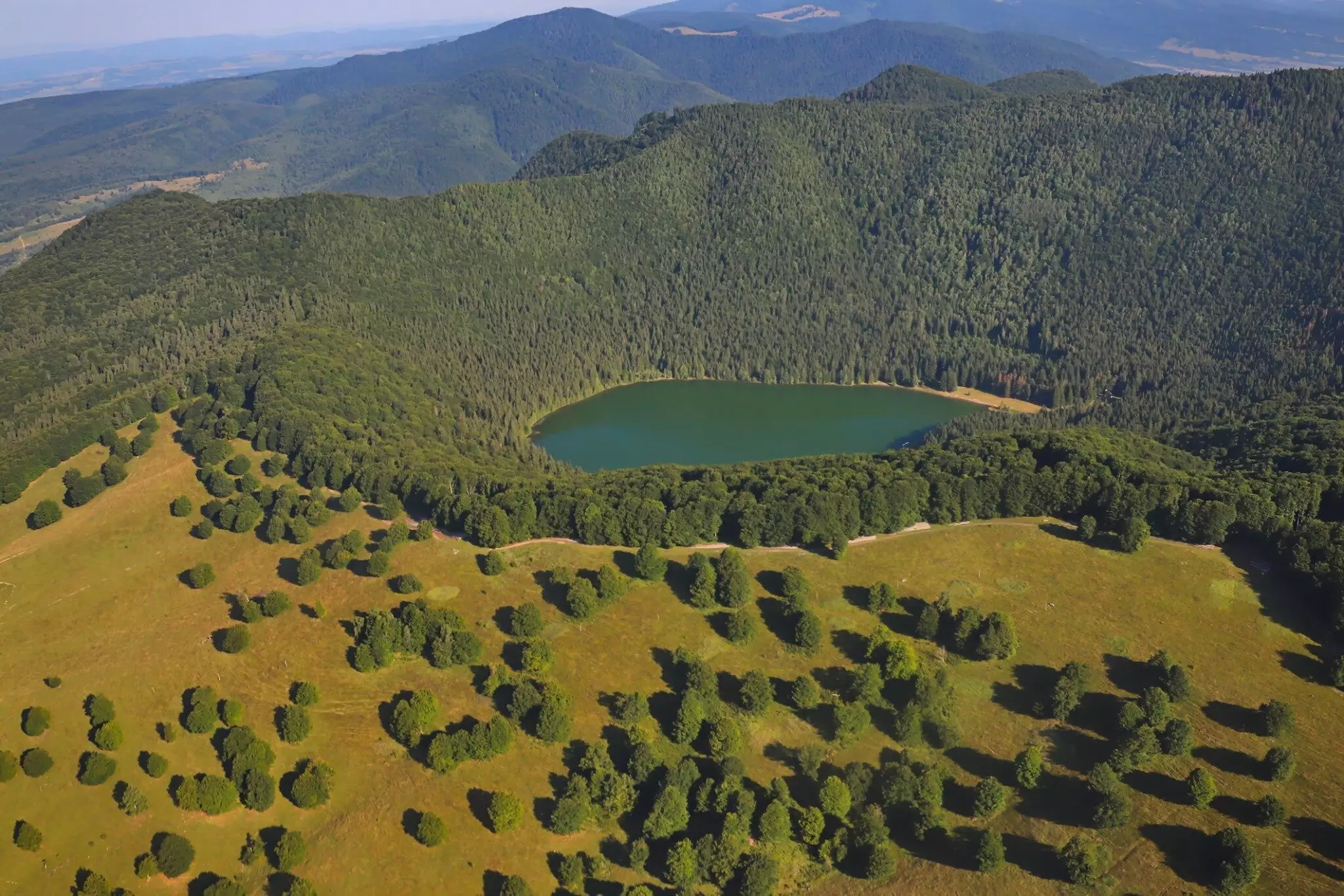When it comes to volcanic hazard assessment, understanding the behavior of dormant volcanoes is of utmost importance. The ability of a volcano to erupt after tens of thousands of years of dormancy raises critical questions and can pose a previously unrecognized threat to its surrounding areas. A recent study conducted by Hungarian scientists sheds light on the signs preceding a volcanic eruption and explores the factors that make such eruptions particularly dangerous.
Ciomadul, the youngest volcano in the Carpathian-Pannonian region, served as the subject of investigation for a team of researchers from the ELTE Eötvös Loránd University and other institutions across Europe. By employing high-resolution integrated mineral texture and chemical composition data, the scientists aimed to reconstruct the volcano’s eruptive history and understand the reasons behind its predominantly explosive activities during its last active period.
Throughout the volcano’s million-year lifespan, it has experienced several long periods of dormancy, only to reignite with volcanic eruptions after tens of thousands of years. The researchers discovered through U-Th-Pb-He geochronology that the most significant volcanism occurred within the last 160,000 years. Lava dome extrusions took place between 160,000 and 95,000 years ago, followed by a dormant phase of over 30,000 years before eruptions resumed 56,000 years ago. The characteristics of the more recent eruptions showcased a dangerous shift towards explosive activities.
The Detective Work of Petrology
The initiation of volcanic eruptions and the processes governing eruption styles can be found within the rocks formed during volcanic activities. By studying the rock-forming minerals, detailed insights into the cause and mechanisms of eruptions can be obtained. The research team meticulously examined the chemical composition of the mineral phases in the pumices formed during explosive volcanism between 56,000 and 30,000 years ago. This analysis enabled the researchers to understand the magma conditions, the architecture of the magma reservoir system, and the factors contributing to explosive eruptions.
The Role of Amphibole
Amphibole, a mineral found in the Ciomadul pumices, played a pivotal role in the study. Its crystal lattice can incorporate various elements, with substitutions depending strongly on the magma conditions. The researchers observed a significant variation in the chemical composition of amphibole even within a single sample. This variation indicated the presence of a low-temperature, highly crystalline magma reservoir at depths of 8-12 kilometers, as well as the influence of higher-temperature recharge magmas from greater depths on the shallow magma storage. The distinct composition of amphibole in the recharge magmas compared to the previous eruptive period played a crucial role in the shift towards explosiveness.
The research team also detected amphiboles with a chemical composition previously unreported in volcanic rocks from other volcanoes. These amphiboles were interpreted as an early crystallization phase in ultra-hydrous magmas, suggesting that water-rich recharge magmas played a crucial role in triggering explosive eruptions. Additionally, the composition of the outermost rim of the crystals and the iron-titanium oxides provided valuable information about the magma conditions just before the eruptions. These findings highlight the importance of quantitative volcano petrology studies in reconstructing subvolcanic magma reservoir structures and magma storage conditions, ultimately aiding in eruption forecasting and pre-eruption signal interpretation.
As of now, the Ciomadul volcano shows no signs of reawakening. However, the research team emphasized that reactivation can occur rapidly, within weeks or months, if there is a recharge by hot, hydrous magma. Long-dormant volcanoes, like Ciomadul, can pose previously unrecognized hazards, and their study is crucial for volcanic hazard assessment. Consequently, Ciomadul is now receiving increased international attention, serving as a reminder that beyond the 1,500 known active volcanoes, dormant volcanoes can also harbor the potential for volcanic activity, fueled by hidden melt-bearing magmas beneath their surface.
The study conducted by Hungarian scientists provides valuable insights into volcanic hazard assessment and the behavior of long-dormant volcanoes. By unraveling the secrets hidden within the rocks and minerals, researchers can better understand the conditions that lead to volcanic eruptions, particularly their transition to explosiveness. The knowledge gained from this research can aid in predicting eruptions and recognizing the warning signs, ultimately ensuring the safety of populations living near dormant volcanoes.


Leave a Reply